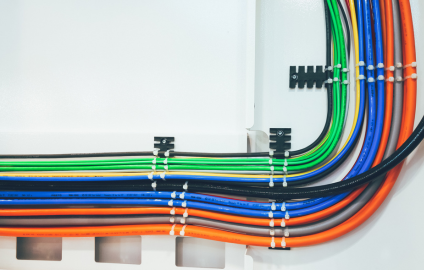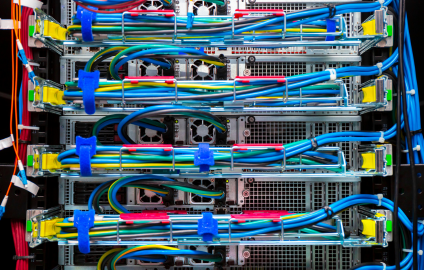Customer Service
May 5, 2023

Electrical cable management is essential to your work as an electrical contractor. Proper management helps streamline your cable installations, reduce clutter, and improve workplace safety. Read on for some essential tips, as well as our top solutions for optimal electrical cable management!
Start with planning: To be sure which cables you need, plan out your cable management system. This helps identify and address potential issues before they become problems. Key considerations: the type and quantity of cables, the building’s layout, and the best tools and techniques.
Identify cable routes: Plan out cable routes before installation to determine the best way to run cables, and to reduce the risk of damage or electromagnetic interference. Consider the location of your electrical devices and equipment, and the paths cables need to take to reach them. This ensures cables are not stretched beyond their capacity.
Keep cables short: This reduces the risk of tangling, damage, and interference. It also keeps cables neater and easier to manage. Measure cable lengths accurately to avoid excess.
Choose the right product: Whether you need fibre optic or copper, our wide selection of wire and cable offers a lot of choices. To help you decide, we’ve compiled a table of electrical cables and their codes for our B.C.-based folks, shown below.


Electrical Cable Types Permitted in B.C.
| Cable Type | Code | Description |
| Non-metallic sheathed cable (NM) | AC90 | For residential and commercial construction; also called “Romex” |
| Armoured cable (AC) | ACWU90 | For indoor or outdoor uses where mechanical protection is needed |
| Flexible cord | SJ | For portable appliances and tools |
| High-temperature wire | T90 | For high-temperature applications, including ovens and furnaces |
| Underground feeder cable (UF) | N/A | For outdoor lighting or irrigation systems |
| Multi-conductor cable | NMD90 | For residential and commercial construction where multiple circuits need to run together |
| Low-voltage wire | N/A | For low-voltage applications, such as doorbells and thermostats |
Note: this list will vary for Alberta and Saskatchewan. Get to know the specific codes and regulations in your location.
Clear and consistent cable labelling helps identify cables and their purposes at a glance, making it easier to maintain, troubleshoot, and repair electrical systems. To efficiently label cables, consider markers, colour coding, or Brady labels. Make sure to use high-quality labels that can withstand environmental conditions.


Cable trays and conduits are ideal for organizing and routing your cables. They also help prevent sharp bends in cables, which can cause damage, or even lead to fires.
Cable trays: Whether metal or plastic, cable trays and their accessories do wonders for support and protection. They come in various sizes and designs—for example, ABB’s Express Cable Basket Trays, and T&B Express Cable Trays—to suit different cable types and applications. You can install them on walls, ceilings, or floors.
Conduits: Conduits are another means of enclosing and protecting cables from physical damage. These tubes, available in different sizes and shapes, are made of PVC, metal, or fiberglass. Need to fix damaged conduit? The IPEX EPR Conduit Repair Kit is perfect for fast and easy repairs.
Cables ties: Want to prevent tangles? Cable ties and accessories do just the trick. They’re easy to use, come in different sizes and colours, and keep cables well-organized. Consider Ty-Rap cable ties—they help fasten, bundle, clamp, and manage wires in a jiffy.
Clamps, clips, and brackets: Cables need a bit of slack for movement or expansion due to temperature changes or vibrations—but too much can cause tangles. To maintain just the right amount of slack, use cable clamps, clips, and brackets


We’ve covered the basics, but here’s how you can up your cable management game even further:
Keep cables away from heat sources: Heat exposure can melt or erode cables, potentially causing electrical malfunctions or fires. Keep cables away from HVAC systems, boilers, and radiators.
Stay connected: Heat-resistant materials such as heat shrink kits, and rolls, along with splice kits, help keep your cables connected.
Use cable management software: This helps track installations and maintenance work, including the cable locations, lengths, and types. There are a lot of software choices out there—do your homework to find the best software for your needs. Check out our Datacom Guide for more information on managing data communications wire and cable.
Whether you need cable trays, conduits, or new ideas, we have you covered. You’ll find cable reels, cable cutting, and other cable management services at all 21 of our Western Canadian E.B. Horsman & Son locations.
If we don’t have a product in stock, we’ll ensure you get what you need—overnight in most locations. Get in touch to learn more!






Customer Service
1.888.467.7626